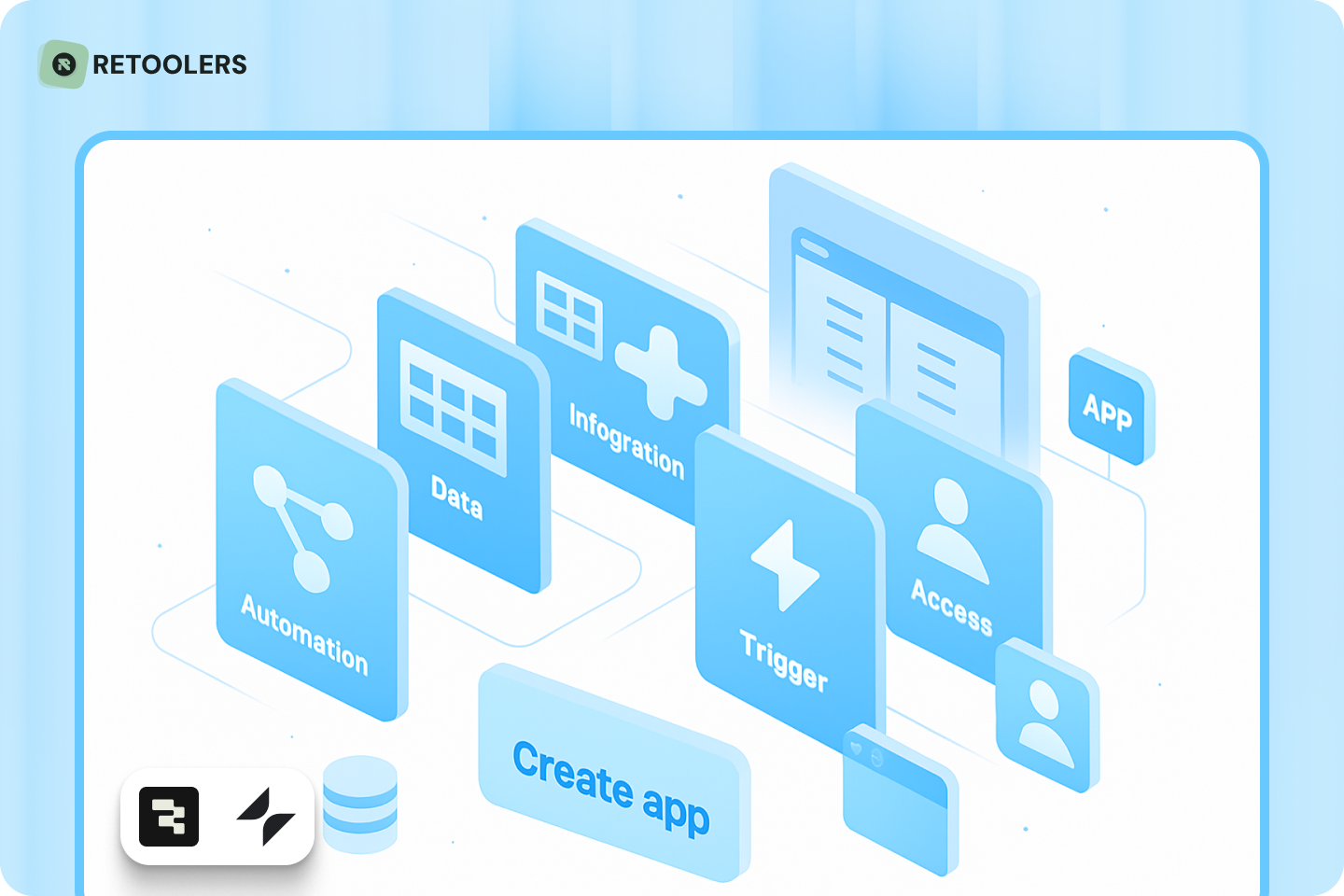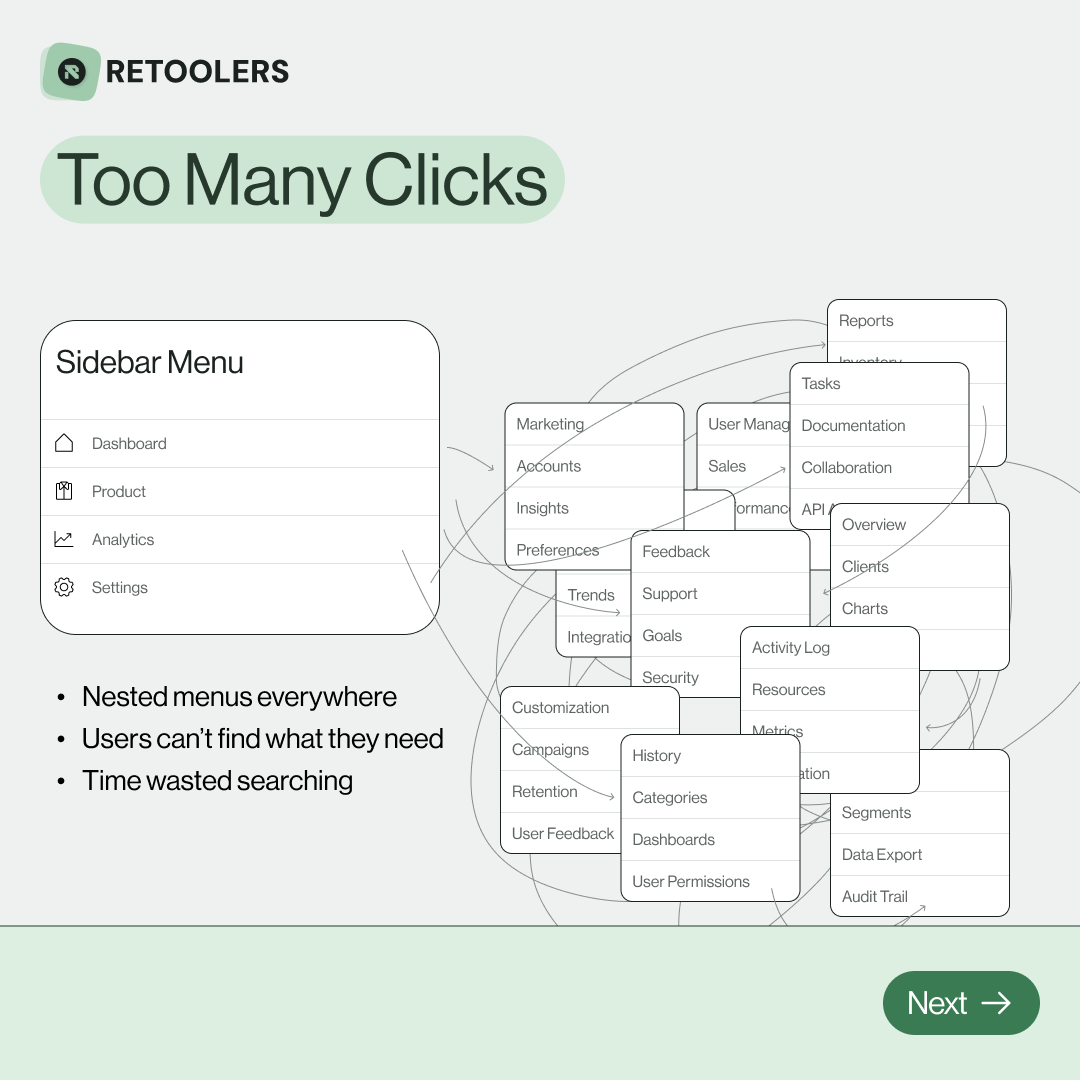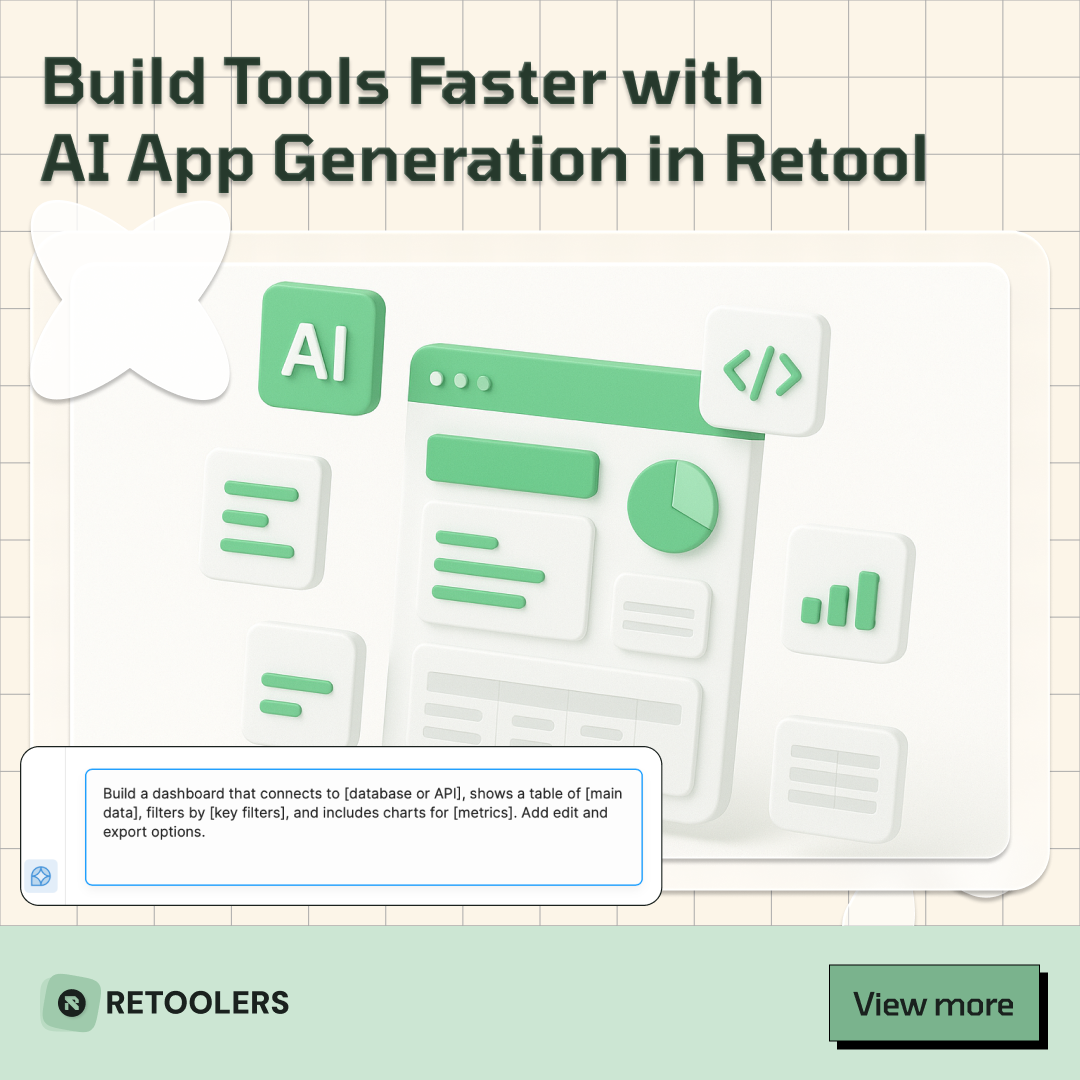Duy Vu
October 10, 2025
•
25 mins read

In today’s fast-paced digital landscape, businesses and creators are constantly seeking tools that simplify app development without compromising quality. The Glide app has emerged as a powerful no-code platform that transforms spreadsheets into sleek, functional mobile and web applications.
Whether you're a startup founder, a small business owner, or a non-technical team member, this guide will walk you through everything you need to know about Glide — from its core features and pricing to how it compares with other platforms like Retool.
We’ll also explore how Retoolers use Glide alongside Retool to build internal tools that streamline operations, especially for SMBs. Plus, we’ve included practical visuals like screenshots, diagrams, and workflows to help you grasp the platform’s capabilities more clearly.
Let’s dive in.
In the ever-growing world of no-code platforms, the Glide app has emerged as one of the most popular tools for building mobile and web applications without writing a single line of code. But before we dive into its features, limitations, and pricing, let’s start with the basics: what is Glide?
Glide is a no-code development platform that allows users to transform spreadsheets or databases into sleek, functional apps. Instead of hiring developers or learning programming languages, business users, startups, and even individuals can design apps through an intuitive drag-and-drop interface.
The platform has gained traction because it strikes a balance between accessibility and functionality. Compared to competitors like Airtable, Bubble, Budibase, and Outsystems, Glide stands out for its affordability, mobile-first design, and rapid development capabilities.
However, Glide isn’t a one-size-fits-all solution. While it’s excellent for small-to-medium businesses (SMBs), startups, and non-technical teams, it has limitations when it comes to complex workflows, enterprise-grade applications, and advanced customization.
This guide will cover everything you need to know about the Glide app: its features, strengths, weaknesses, pricing glides, and whether it’s the right platform for your needs.
Glide started as a front-end builder for Google Sheets, but it has since evolved into a more robust platform. Today, it supports multiple data sources, including:
For users without an existing database, Glide offers two native options:
While Big Tables sound impressive, they come with trade-offs. They’re slower than Glide Tables and lack certain features, such as rollups on computed columns. Even more frustrating, there’s no automated migration path between Glide Tables and Big Tables. If you outgrow one, you’ll need to manually migrate your data and reconfigure workflows.
Glide has hinted at merging these two systems in the future, but for now, scaling can be cumbersome.
Glide offers two types of columns:
For non-coders, computed columns are a powerful feature. They make it easy to add logic without writing formulas. However, advanced users may find them restrictive. Unlike Airtable’s flexible formula fields, Glide forces you to create multiple “helper” columns for complex logic.
For example, you can’t directly use math expressions in an “If-Then-Else” column. Workarounds exist (like using JavaScript), but they add complexity and can slow performance.
Glide’s Interface Designer is one of its strongest features. With over 40 UI components, users can build modern, responsive apps that look great on both desktop and mobile.
Where Glide really shines is mobile. Unlike Bubble or Retool, which are web-first, Glide is inherently mobile-first. Apps built with Glide feel like native mobile apps and can even function offline as Progressive Web Apps (PWAs).
That said, customization has limits. While you can add custom CSS, it applies globally — meaning you can’t style mobile and desktop separately. For businesses needing pixel-perfect control, this can be frustrating.
Until 2024, Glide’s automation (called Glide Actions) was limited to user-triggered events. But in 2025, Glide introduced Workflows, which significantly expanded its automation capabilities.
New features include:
These updates make Glide competitive with automation platforms like Zapier or Make, though it’s still not a full automation suite.
On the API side, Glide introduced the Bulk API for high-volume operations, but it’s only available on Enterprise plans. Another limitation: Glide’s API can’t retrieve computed columns, which complicates integrations with external tools.
While Glide is primarily no-code, it offers some low-code flexibility:
There’s also an Experimental Code Column, which lets you reference external JavaScript. But it comes with caveats: your code must be public, and it can’t perform actions — only compute data.
These features are helpful but limited compared to developer-focused platforms like Retool or Appsmith. Overusing them can also slow down your app significantly.
Glide offers robust security features, including:
However, managing complex security frameworks can be challenging. For example, Row Owners can’t be assigned dynamically using computed columns, making multi-level permissions (like managers vs employees) cumbersome.
Glide is best suited for:
Glide is not ideal for:
Glide is excellent for CRUD apps and dashboards. You can connect multiple data sources, visualize metrics, and build tools for operations, HR, or finance teams.
Glide’s mobile-first design makes it perfect for field operations. Apps can function offline as PWAs, which is critical for teams working in areas with poor connectivity.
Startups can use Glide to build MVPs in days instead of months. By connecting existing data and leveraging drag-and-drop components, teams can test ideas quickly and gather feedback.
Now let’s talk about pricing glides, one of the most important considerations for businesses.
In late 2024, Glide introduced major pricing changes, shifting from user-based to usage-based pricing. Here’s a breakdown:
Despite the reductions, Glide remains one of the most affordable no-code platforms. For SMBs and startups, the ROI is still excellent.
The Glide app is one of the most accessible and affordable no-code platforms available today. Its strengths lie in:
For businesses aiming to build robust internal tools, many Retoolers combine Retool with Glide to optimize operations. While Glide excels in mobile-first, no-code app creation ideal for SMBs and startups, Retool offers powerful low-code capabilities tailored for complex internal workflows and enterprise-grade applications.
This combination allows teams to leverage Glide's simplicity and speed for customer-facing and mobile apps, while using Retool to build sophisticated internal dashboards and tools that require deeper customization and integration.
Together, Retool and Glide provide a complementary toolkit that suits the diverse needs of SMBs, enabling efficient operations and rapid development without heavy reliance on traditional software engineering.
Stop wasting hours on scattered tools. Let Retoolers build your custom dashboard and streamline your operations today. Book a call with us!
Looking to supercharge your operations? We’re masters in Retool and experts at building internal tools, dashboards, admin panels, and portals that scale with your business. Let’s turn your ideas into powerful tools that drive real impact.
Curious how we’ve done it for others? Explore our Use Cases to see real-world examples, or check out Our Work to discover how we’ve helped teams like yours streamline operations and unlock growth.

🔎 Internal tools often fail because of one simple thing: Navigation.
Too many clicks, buried menus, lost users.
We broke it down in this 4-slide carousel:
1️⃣ The problem (too many clicks)
2️⃣ The fix (clear navigation structure)
3️⃣ The Retool advantage (drag-and-drop layouts)
4️⃣ The impact (happier teams)
💡 With Retool, you can design internal tools that are easy to use, fast to build, and simple to maintain.
👉 Swipe through the carousel and see how better UX = better productivity.
📞 Ready to streamline your tools? Book a call with us at Retoolers.

🚀From idea → app in minutesBuilding internal tools used to take weeks.
Now, with AI App Generation in Retool, you can describe what you want in plain English and let AI do the heavy lifting.
At Retoolers, we help teams move faster by combining AI + Retool to create tools that actually fit their workflows.
👉 Check out our blog for the full breakdown: https://lnkd.in/gMAiqy9F
As part of our process, you’ll receive a FREE business analysis to assess your needs, followed by a FREE wireframe to visualize the solution. After that, we’ll provide you with the most accurate pricing and the best solution tailored to your business. Stay tuned—we’ll be in touch shortly!



